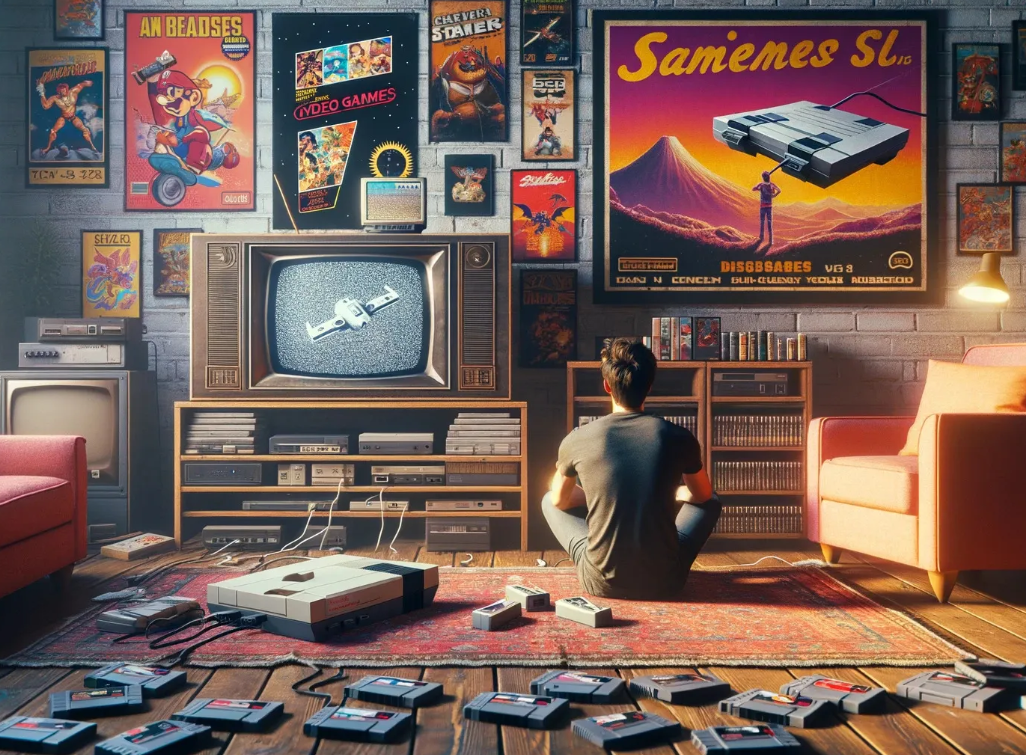1. Introduction to Retro Gaming
In recent years, retro gaming has experienced an extraordinary revival. While video games continue to evolve with cutting-edge graphics and complex storylines, many gamers are rediscovering the charm of classic games from the past. Retro gaming refers to playing old or “vintage” video games, typically from the 1970s through the early 2000s, on older hardware or through emulation. This growing trend is driven by nostalgia, simplicity, and the timeless appeal of gameplay that defined earlier gaming eras.
Retro gaming offers a unique experience distinct from modern gaming. It transports players back to a time when games relied on creativity and innovation within the limitations of early technology. Classic titles like Super Mario Bros., Sonic the Hedgehog, The Legend of Zelda, and Pac-Man remain cultural icons, proving that the allure of retro gaming is not just a fleeting trend but a lasting phenomenon.
2. The Nostalgic Appeal of Retro Games
One of the primary drivers behind the resurgence of retro gaming is nostalgia. For many, playing games from their childhood offers a way to relive cherished memories. These games were often associated with simpler times, when players would gather around their favorite consoles or arcade machines, competing or cooperating with friends and family. Retro gaming is not just about playing games—it’s about revisiting a piece of personal history.
Beyond the sentimental value, retro games are praised for their simplicity and accessibility. Older games often have straightforward mechanics and gameplay loops that anyone can pick up quickly. Unlike many modern titles that require long tutorials and complex control schemes, retro games allow players to dive right into the action. This simplicity is refreshing in an era dominated by sprawling, intricate gaming experiences.
3. The Role of Emulation and Modern Platforms
The revival of retro gaming wouldn’t be possible without emulation technology and modern gaming platforms. Emulation allows gamers to play classic titles on modern devices, such as PCs, smartphones, or even contemporary gaming consoles. This has made it easier than ever for gamers to access and enjoy their favorite games from the past. Platforms like Steam, PlayStation Network, and Nintendo’s Virtual Console offer a wide range of retro titles that can be purchased and played digitally.
Moreover, mini versions of classic consoles, such as the NES Classic and Sega Genesis Mini, have been released, offering gamers a nostalgic experience with a modern twist. These devices are pre-loaded with a selection of popular games and come with HDMI outputs, making them compatible with today’s televisions. This combination of nostalgia and convenience has driven retro gaming into the mainstream, attracting both veteran gamers and newcomers.
4. The Cultural Impact of Retro Gaming
Retro gaming has had a profound impact on the broader culture, influencing not only the gaming industry but also music, fashion, and entertainment. The pixel art and chiptune music that defined early video games have become iconic, influencing modern game design, music, and visual aesthetics. Indie games like Shovel Knight and Celeste pay homage to the look and feel of retro games, while still offering fresh, contemporary experiences.
Retro gaming has also spawned a vibrant community of enthusiasts, collectors, and content creators. Platforms like YouTube and Twitch are home to countless retro gaming channels, where players stream gameplay, review classic titles, or unbox rare game cartridges and consoles. This growing interest has sparked a renewed appreciation for gaming history and has introduced younger generations to the classics that laid the foundation for today’s gaming landscape.
5. The Future of Retro Gaming
The future of retro gaming looks bright, as the trend shows no signs of slowing down. As new generations of gamers discover the joys of classic titles, developers and publishers are finding ways to bring these games to a wider audience. Whether through remakes, remasters, or continued emulation support, retro gaming will likely remain a staple of the gaming industry for years to come.
In addition to preserving the past, the retro gaming community continues to innovate. Fans of classic games are creating new hardware and accessories that enhance the retro gaming experience, such as modern controllers, HDMI adapters for older consoles, and even new games designed to run on vintage hardware. This blend of preservation and innovation ensures that retro gaming remains relevant and accessible to future generations.
Conclusion: A Lasting Legacy of Fun and Innovation
Retro gaming is more than a trend; it’s a celebration of gaming history and a reminder of the joy that simple, creative gameplay can bring. From the nostalgic allure of revisiting childhood favorites to the influence on modern game design, the resurgence of retro gaming is a testament to the lasting impact of the early years of video gaming. As the gaming community continues to embrace these classic titles, retro gaming will continue to thrive, blending the past with the present for generations to come.
